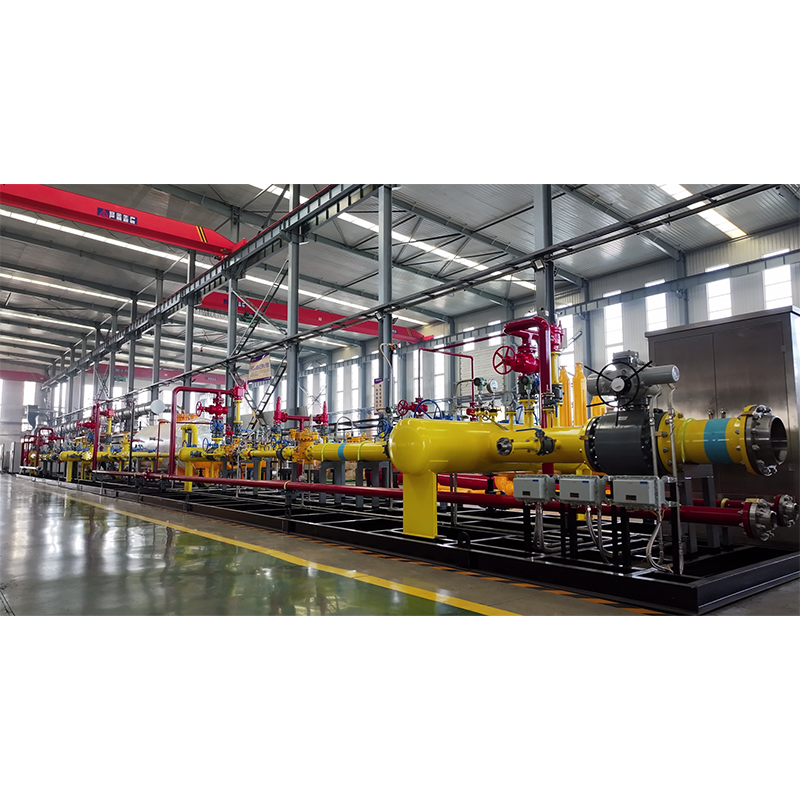
Dec . 05, 2024 14:19
Back to list
pressure reducing regulators
Understanding Pressure Reducing Regulators A Key Component in Fluid Control Systems
Pressure reducing regulators (PRRs) are essential components in various industrial and residential applications where gas and fluid pressure must be controlled for safety and efficiency. By maintaining a consistent output pressure regardless of fluctuations in upstream pressure, these devices ensure that systems operate smoothly and within safe limits. This article explores the functioning, types, applications, and considerations of pressure reducing regulators.
How Pressure Reducing Regulators Work
At its core, a pressure reducing regulator is designed to decrease the pressure of a fluid entering a system. The device usually consists of an inlet, an outlet, and a mechanism that adjusts to regulate the pressure. When fluid enters the regulator, it encounters a diaphragm that reacts to the pressure within the system. If the downstream pressure exceeds a predetermined set point, the diaphragm moves to reduce the flow of fluid, thereby lowering the downstream pressure. Conversely, if the pressure drops below the set point, the diaphragm opens to allow more fluid to pass through.
One of the crucial aspects of PRRs is their ability to handle variable inlet pressures and maintain a stable outlet pressure. This feature is particularly important in systems where high-pressure fluid could cause damage or operational inefficiencies.
Types of Pressure Reducing Regulators
There are several types of pressure reducing regulators, each designed for specific applications
1. Spring-loaded Regulators The most common type, these regulators use a spring mechanism to exert force against the diaphragm. The spring tension can be adjusted to set the desired outlet pressure.
2. Pilot-operated Regulators These regulators utilize a pilot system to sense downstream pressure trends. They are suitable for high-flow applications and maintain precise control over output pressure.
3. Electronic Regulators Employing sensors and control devices, electronic regulators offer advanced precision and adaptability. They can respond dynamically to changing conditions, making them ideal for modern, automated systems.
4. Dome-loaded Regulators By using a gas-filled dome instead of a spring, these regulators can manage higher pressures effectively. They are particularly useful when dealing with pressures exceeding standard limits.
Applications of Pressure Reducing Regulators
pressure reducing regulators

Pressure reducing regulators are widely used across various sectors
- Industrial Processes In manufacturing facilities, PRRs regulate gas and fluid pressures in systems such as boilers, pneumatic systems, and natural gas lines. This ensures safe operation and prevents equipment damage.
- Residential Use Homeowners commonly encounter pressure reducing regulators in water supply lines, where they prevent plumbing damage by reducing incoming water pressure to safe levels.
- Medical Applications In healthcare settings, PRRs are utilized to control gas flows for medical equipment, ensuring patient safety and the reliable operation of devices such as ventilators
.- Automotive Industry In vehicles, these regulators help manage fuel and air mixtures in engines, improving performance and emissions control.
Considerations When Choosing a Pressure Reducing Regulator
When selecting a PRR for a specific application, several factors should be considered
- Pressure Range Understand the inlet and outlet pressure requirements to choose a regulator that can handle specific operational conditions.
- Flow Rate Identify the required flow rate for the application to ensure that the regulator can maintain performance without causing excessive pressure drops.
- Material Compatibility Ensure the materials used in the regulator are compatible with the fluid being controlled to prevent corrosion and degradation.
- Maintenance Needs Consider the maintenance requirements of the regulator to ensure long-term reliability and performance.
In conclusion, pressure reducing regulators are vital for the safe and efficient operation of fluid control systems across various industries. By maintaining stable outlet pressures and accommodating variable inlet conditions, these devices protect machinery, enhance performance, and ensure safety in applications ranging from industrial processes to residential plumbing. Understanding their functionality and selection criteria is essential for engineers and operators alike.
Latest news
-
Safety Valve Spring-Loaded Design Overpressure ProtectionNewsJul.25,2025
-
Precision Voltage Regulator AC5 Accuracy Grade PerformanceNewsJul.25,2025
-
Natural Gas Pressure Regulating Skid Industrial Pipeline ApplicationsNewsJul.25,2025
-
Natural Gas Filter Stainless Steel Mesh Element DesignNewsJul.25,2025
-
Gas Pressure Regulator Valve Direct-Acting Spring-Loaded DesignNewsJul.25,2025
-
Decompression Equipment Multi-Stage Heat Exchange System DesignNewsJul.25,2025

